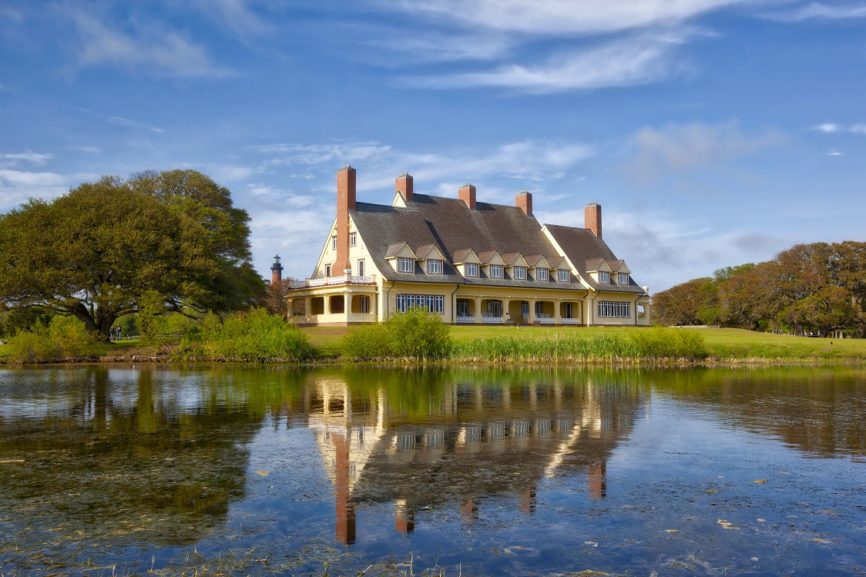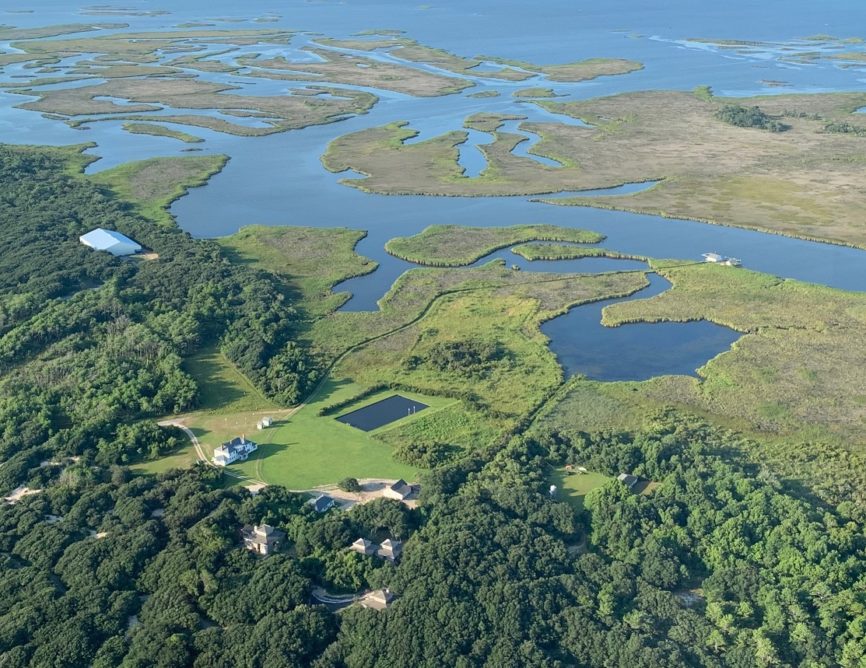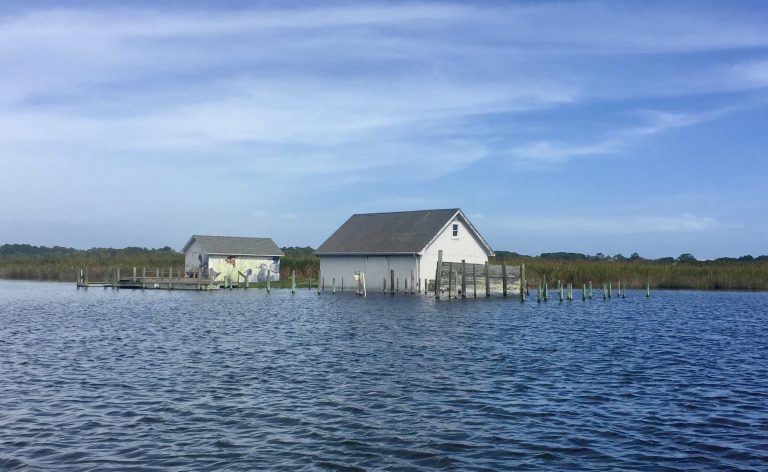The legendary hunting clubs of Currituck Sound are gone. There were over 100 of them at one time, lining the shoreline from Back Bay in Virginia to Duck and Southern Shores.
The names are still a part of the landscape. The Whalehead Club in Corolla may be the best known. But everyday people play golf on the grounds of the Currituck Club. When the Currituck Club clubhouse burned down in 2003 it marked the death knell for the second oldest hunting club in the nation.

The Pine Island Hunt Club is the exception, although even that has changed its mission.
Forty years ago, the Slick family, the last owners of the club, signed the land over to Audubon North Carolina and for the past 10 years, the Audubon Society has been the sole administrator for the property.
Now renamed the Donal O’Brien Sanctuary, it is a place of surprising beauty and diversity.
The Sanctuary includes marsh, wetlands and maritime forest spread over 2600 acres. To put that into perspective, that is the size of the purchase that created Southern Shores.

The south end of the property is at the Currituck/Dare County line, on the north end of Sanderling Resort.
There is a wide, hard packed trail there. At one time that was the road to Corolla. Anyone hoping to drive north had to check in at the Pine Island Club guardhouse and get permission to drive to the village.
Today it is a three mile trail paralleling Currituck Sound, suitable for almost anyone. The habitats go from dense maritime forest to marsh and wetlands, with two observation towers overlooking the sound along the way.
Because it’s hard packed dirt, and very wide, the trail is a great bike ride for anyone with fat tires. There are no hills at all, so even children as young as nine or ten may be able to manage it.
On the north end, the trail ends or begins at the Pine Island Raquet Club and that is a great place to start the trek. There is plenty of parking there and the north entrance has the only real shade that’s available.
A couple of helpful hints. There is very little shade along the path, so be sure to bring water. Late spring to early fall, bug repellant is a necessity.
The trail is only one part of the Sanctuary.
There is a campus at the end of Audubon Drive housing the staff of the Sanctuary. The main building is the 1913 Pine Island Clubhouse.
It is a beautiful and impressive two-story wooden structure, set in the middle of an open grassy field.
On the western side of the building, dozens of purple marlin homes dot the landscape. There is an impoundment pond and a road leading to the sound where there is a dock with kayaks ready to explore the marsh and nearshore of Currituck Sound.

For all its beauty, though, the Sanctuary is ground zero for rising sea levels. The evidence for that shows up in subtle yet unmistakable ways.
The ground is often soft and spongy, especially after rain events. What has been happening is that beneath the soil, there is a lens of salt water from the ocean. As sea levels creep up, that lens moves closer to the surface, creating less opportunity for rainwater to drain.
There are steps that can be taken to mitigate some of those effects, and the Audubon Society is in the forefront of being proactive.
Sea level rise is typically thought of as an ocean event, but the marshes, estuaries, and wetlands of the sounds are also affected. In some ways, the processes on the sound side are more complex than the ocean, but there is clear evidence that rising water levels are affecting the shoreline.
To offset that process, Audubon North Carolina just to the south of the docks, is about to begin a very large—about 600’—living shoreline project.
There are also plans, which have already begun, to elevate the buildings on the campus grounds. A pavilion and public gathering place is under construction and sits atop a 4’ dune.
However, most significantly, the main buildings, including the historic clubhouse, will be elevated 7’ and connected with a boardwalk. According to Audubon officials, sometime in the next 40-60 years what is now the lawn will become a salt marsh.
What is significant about the plans, other than preparing for the future, is that the work that Audubon is doing at Pine Island seems to have the active cooperation of North Carolina elected officials as well as appointed officials at the highest level of the state.
